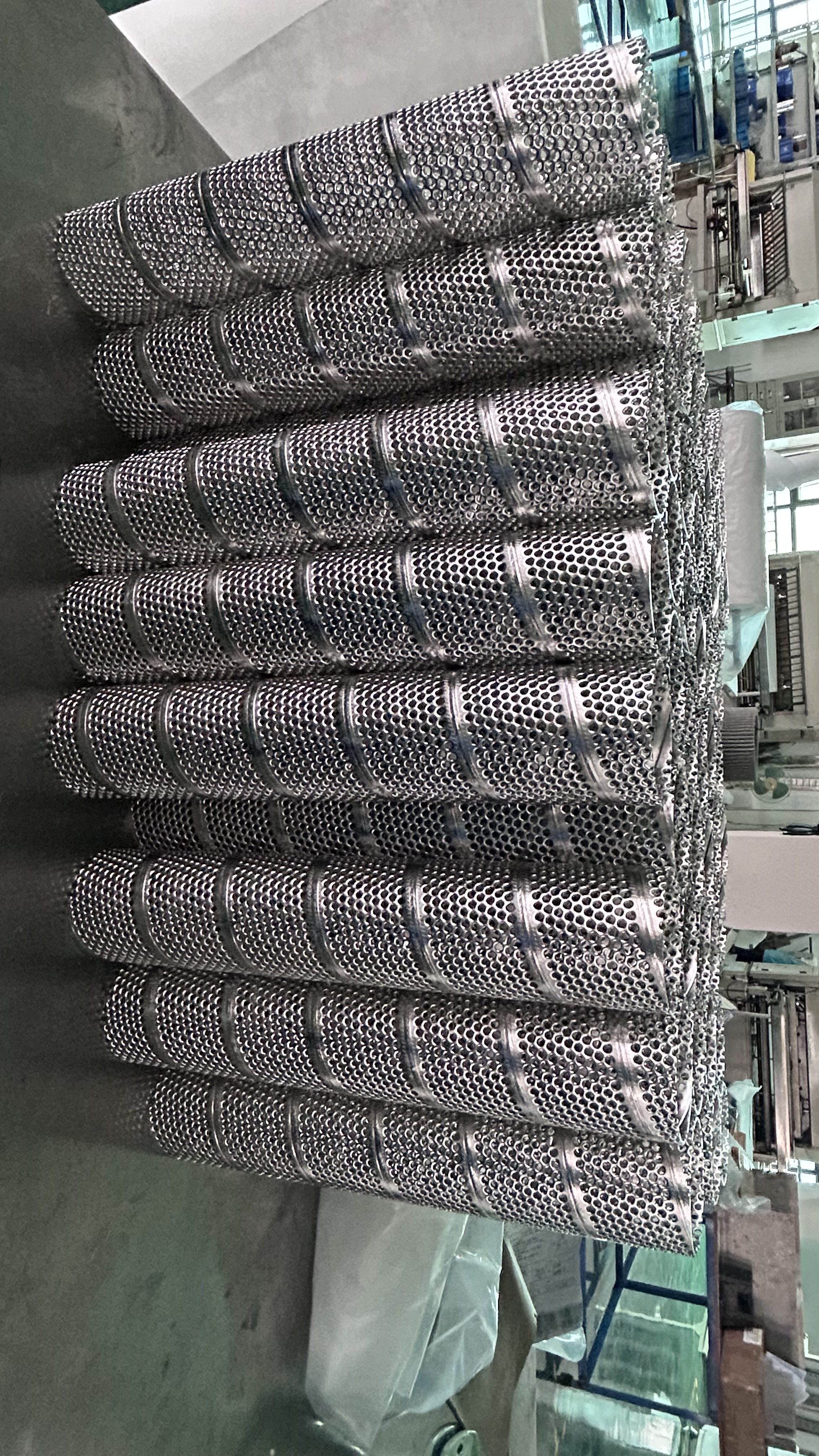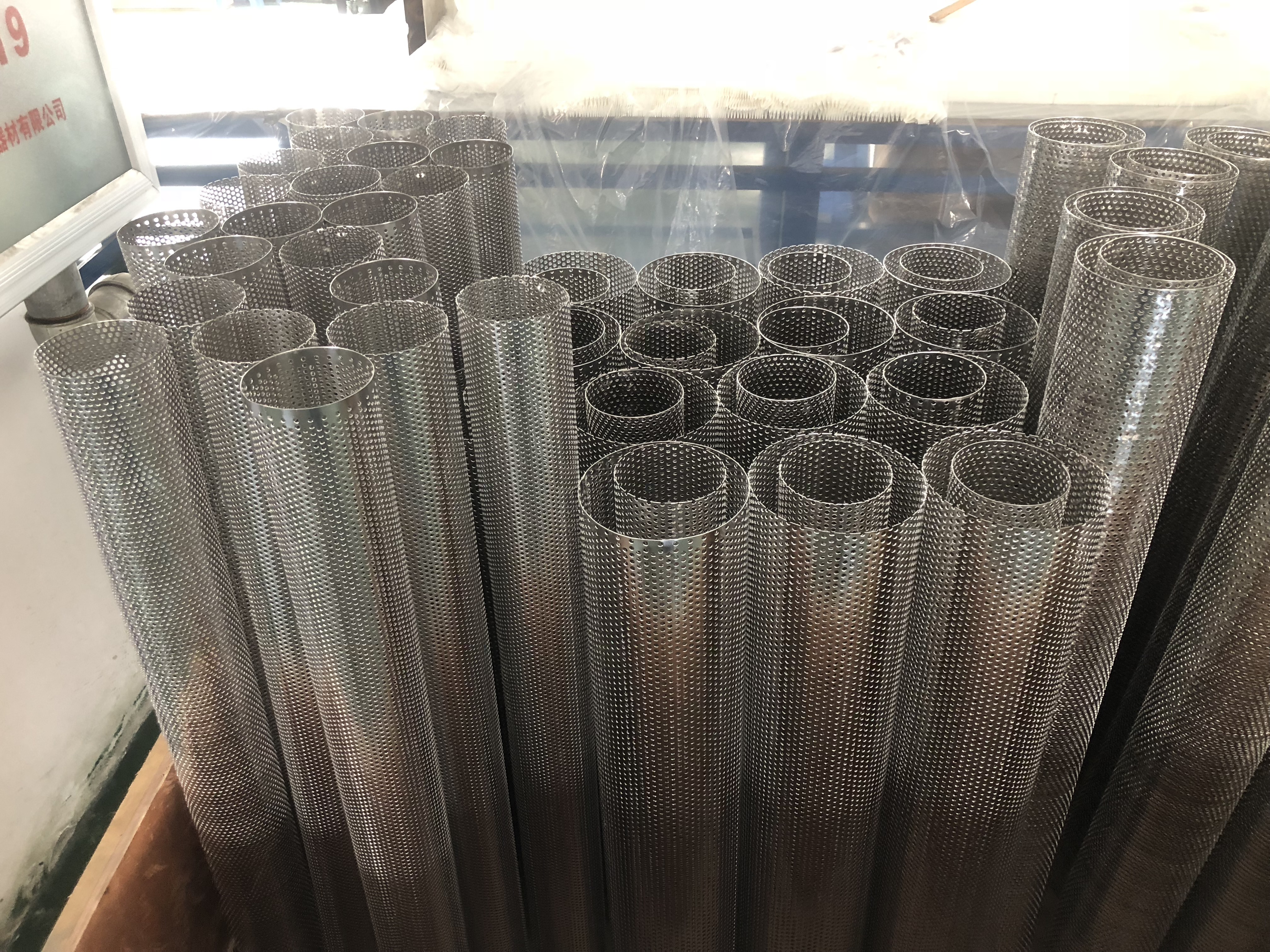Which is better, Spiral Skeleton or Punch Plate Skeleton
Oct 14, 2025
Spiral Skeleton Features
Structural Features
Utilizing a spiral welding process, this material offers uniform pore distribution and strong dirt-holding capacity. It also supports pleated molding, making it easy to weld and install.
Applications
Commonly used in applications requiring high structural strength and filtration efficiency, such as hydraulic filter elements and silent water filter pipes.

Punch Plate Skeleton Features
Structural Features
This material is stamped to create a square or round hole mesh, supporting customized mesh sizes (e.g., 100 mesh), making it suitable for applications requiring high filtration accuracy.
Applications
It is primarily used in applications requiring high-precision filtration, such as dust collector filters and fluid filtration equipment.

Selection Recommendations
Filtration Accuracy Requirements
For high-precision filtration (e.g., dust removal and hydraulic systems), a perforated plate frame is preferred. For high-efficiency dirt-holding and structural strength requirements, a spiral frame is recommended.
Processing Technology
For mass production efficiency, a spiral frame is more suitable. For quick customization of hole sizes, a perforated plate offers greater flexibility.
Material Selection
Both are primarily made of 304/316 stainless steel, which offers strong corrosion resistance. However, the impact of welding techniques on sealing performance should be carefully considered.
Structural Features
Utilizing a spiral welding process, this material offers uniform pore distribution and strong dirt-holding capacity. It also supports pleated molding, making it easy to weld and install.
Applications
Commonly used in applications requiring high structural strength and filtration efficiency, such as hydraulic filter elements and silent water filter pipes.

Punch Plate Skeleton Features
Structural Features
This material is stamped to create a square or round hole mesh, supporting customized mesh sizes (e.g., 100 mesh), making it suitable for applications requiring high filtration accuracy.
Applications
It is primarily used in applications requiring high-precision filtration, such as dust collector filters and fluid filtration equipment.

Selection Recommendations
Filtration Accuracy Requirements
For high-precision filtration (e.g., dust removal and hydraulic systems), a perforated plate frame is preferred. For high-efficiency dirt-holding and structural strength requirements, a spiral frame is recommended.
Processing Technology
For mass production efficiency, a spiral frame is more suitable. For quick customization of hole sizes, a perforated plate offers greater flexibility.
Material Selection
Both are primarily made of 304/316 stainless steel, which offers strong corrosion resistance. However, the impact of welding techniques on sealing performance should be carefully considered.
Previous :
related
- The Difference Between Sintered Filter and Ordinary Filter
- How to choose the filtration material of dust collection air filter
- Differences between different materials used for filter cartridge end cover
- The difference between Carbon Steel and Stainless Steel
- How to judge the quality of a filter element
- The function of the inner and outer skeletons of the hydraulic oil filter element
- Filtration Material of Hydraulic Oil Filter
- How to Properly Maintain and Extend the Life of an Oil-Gas Separator Filter

